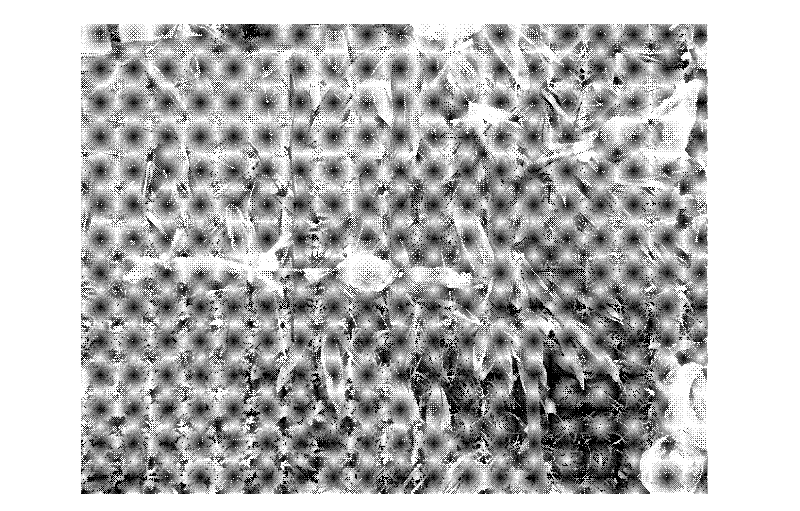High-altitude layering propagation method for sympodial bamboo
A high-altitude layering and secondary technology, which is applied in the field of plant propagation, can solve the problems of low seedling raising efficiency, slow afforestation speed, and high afforestation cost, and achieve the effect of increasing the reproduction coefficient, improving the quality of seedlings, and good lignification
- Summary
- Abstract
- Description
- Claims
- Application Information
AI Technical Summary
Problems solved by technology
Method used
Image
Examples
Embodiment 1
[0020] Example 1 The main stalks of clumping bamboo were reproduced in high altitude in spring
[0021] 1) Nursery season: The nursery season is selected from February to April each year;
[0022] 2) Choose mother bamboo: Choose 1-3 years old healthy mother bamboo without pests and diseases;
[0023] 3) Select the material position: choose the middle and lower part of the main stalk;
[0024] 4) Material treatment: Cut off the shoots of the main stalk that has sprouted branches, keep the middle and lower part of the main stalk, 2 meters in height, cut the bamboo branches 1cm away from the main stalk, and keep the bamboo pockets; cut off the shoots of the unsprouted main stalks, keep The middle and lower part of the main stalk, the height is 2m;
[0025] 5) High pressure method: use plastic bottomless tube bags (thickness 1.5 filaments, diameter greater than the diameter of the main stalk 6cm, length 30cm) that are compatible with the diameter of the main stalk, bagging from the top of ...
Embodiment 2
[0030] Example 2 High-altitude layering propagation of clump bamboo in summer and autumn
[0031] It is basically the same as Example 1, with the following differences:
[0032] 1) Nursery season: the nursery season is selected from May to October each year;
[0033] 2) Choose mother bamboo: choose the healthy mother bamboo of 2 years old, and choose the 2 month old young bamboo that has been lignified;
[0034] 3) Leaf spraying and irrigating the rooting agent in the sleeve, the rooting agent is an aqueous solution containing 0.3wt% potassium dihydrogen phosphate and 0.03wt% naphthalene acetic acid.
[0035] The bamboo seedlings propagated by the above method will take roots 1 month to 2 months after the branches and leaves, and the roots can be semi-ligninized 1 month after rooting, and they can be separated and transplanted. The rooting rate of different bamboo species can reach more than 80%, and the survival rate of transplanting can reach more than 90%. Transplanted from August ...
Embodiment 3
[0036] Example 3 The main and secondary branches of clumping bamboo are propagated by high-altitude layering in spring and summer
[0037] See figure 2 , Basically the same as embodiment 1, the difference is as follows:
[0038] 1) Choose the strong main or secondary branches of the mother bamboo for high-altitude layering;
[0039] 2) The rooting agent is an aqueous solution containing 0.1 wt% potassium dihydrogen phosphate and 0.06 wt% naphthalene acetic acid.
[0040] For clumping bamboo (bamboo species are the same as in Example 1), the rooting rate of the main branch or secondary branch can reach 80% or more. The rooting rate of the main branch is slightly higher than that of the secondary branch. The survival rate of seedlings after transplanting reached more than 90%.
PUM
 Login to View More
Login to View More Abstract
Description
Claims
Application Information
 Login to View More
Login to View More - R&D
- Intellectual Property
- Life Sciences
- Materials
- Tech Scout
- Unparalleled Data Quality
- Higher Quality Content
- 60% Fewer Hallucinations
Browse by: Latest US Patents, China's latest patents, Technical Efficacy Thesaurus, Application Domain, Technology Topic, Popular Technical Reports.
© 2025 PatSnap. All rights reserved.Legal|Privacy policy|Modern Slavery Act Transparency Statement|Sitemap|About US| Contact US: help@patsnap.com


